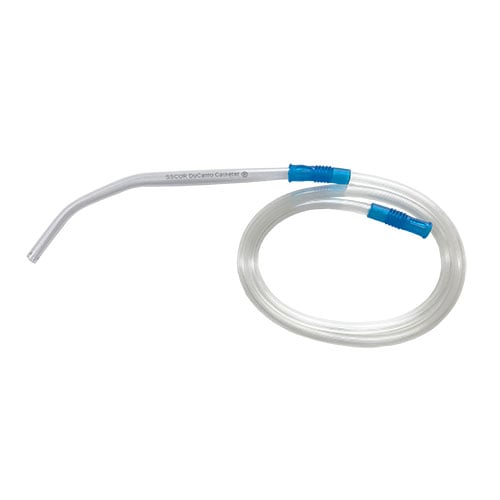
Preplanning is part of the job as an emergency responder. Each shift, you must be prepared to answer any type of emergency that your community throws at you, so you had better plan ahead. When it comes to your equipment, especially your pharyngeal suction device, you want a unit that will fit the needs of the community in which you work. Here are a few considerations when choosing a portable suction unit.
1. Level of Care
The level of care you provide, be it advanced or basic life support, will dictate the features needed on your suction unit. For basic responders who rely on simple airway adjuncts, it is still imperative to clear the airway, but your portable suction needs are most likely not as refined as those of advanced life support (ALS) personnel tasked with performing endotracheal intubation and suctioning.
A simple, effective unit will most likely fit the bill, whereas those advanced responders may require the control and precision of a unit that has variable vacuum pressures. The same can be said of suction catheters: Advanced airway techniques will require a greater range of catheters, including flexible tracheal catheters for suctioning the trachea.
2. Response Times and Areas
Do you work in a major metropolitan area, where the nearest hospital is just a few minutes away? Or do you cover a broad rural zone, where the closest hospital is 40 miles out? The setting in which you work will impact the type of portable suction unit you decide on. You’ll need a unit with dependable, longer-life batteries, perhaps even one that can utilize alternative power sources.
3. Transportability
Portable suction units now come in a variety of sizes, so think about how the unit will be carried onto emergency scenes. Larger units can be easily toted on their own and can accompany other ALS equipment onto critical scenes. If you’d prefer to include your suction unit as part of your airway or trauma bag, a smaller, more compact unit might be a better fit. The size and weight of your suction unit will impact its transportability, so think ahead before deciding.
4. Always Have a Backup
The number of portable suction units that your agency requires will also need to be considered. You will require at least one unit per ambulance/rescue, but what if a unit is damaged? Be sure there are plenty on reserve so that damaged or missing units can be replaced immediately.
5. Think Big
On the subject of backup units, what about disaster situations? Perhaps you work in a region frequented by tornadoes or hurricanes. Perhaps your area experiences regular flooding or wildfires. In disaster situations, you must have plenty of equipment on hand to deal with mass casualties, so be sure your equipment planning includes plenty of portable suction units.
Preplanning for emergencies is just as important as responding to emergencies. Having the right pharyngeal suction device on hand is imperative. Do your homework and choose wisely so that you’re always prepared for the next airway obstruction.
Editor's Note: This blog was originally published in November of 2016. It has been re-published with additional up to date content.

















